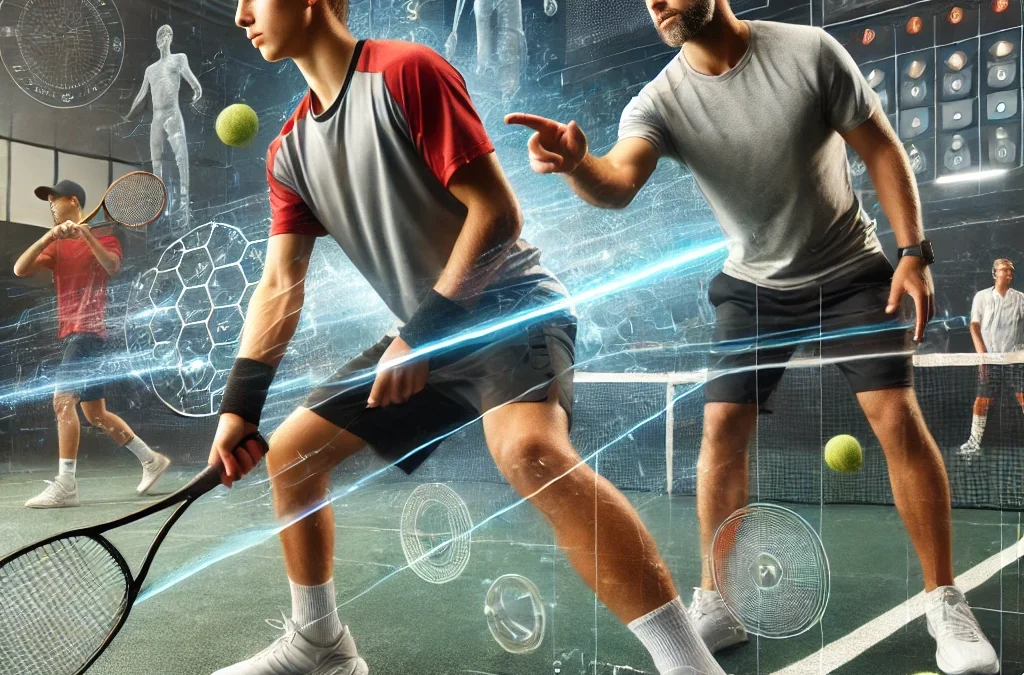High-Performance Tennis Coaching: Strategies for Elite Players
High-performance coaching for elite tennis players goes far beyond just teaching proper technique or improving fitness—it’s about optimizing every aspect of an athlete’s game to help them reach their full potential. Here’s an in-depth look at key strategies used by top coaches to elevate elite players.
1. Tailored Training Programs
- Individualization is Key: Elite players have unique strengths, weaknesses, and playing styles, so cookie-cutter training won’t work. High-performance coaching requires a customized approach where training programs are designed around a player’s specific needs.
- Analyzing Player Data: Coaches often analyze match footage, physical metrics, and detailed performance stats to adjust training sessions. Utilizing technology like wearable fitness trackers or video analysis tools can help coaches identify areas for improvement, such as footwork or serve speed.
- On-Court Drills and Simulations: Training should simulate match conditions, with specific focus on high-pressure scenarios. Drills that challenge a player’s ability to respond quickly under pressure will help prepare them for real-world competition.
2. Mental Conditioning and Focus
- Developing Mental Toughness: Success at the elite level requires a combination of mental resilience and confidence. Coaches work with sports psychologists or employ mental conditioning techniques that include visualization, goal-setting, and meditation. Encouraging players to visualize success in high-stakes situations can strengthen their mental fortitude during matches.
- Handling Pressure: Players at this level regularly face immense pressure from expectations and competition. Techniques such as positive self-talk, breathing exercises, and mindfulness practices can help players maintain composure.
- Building Confidence: Confidence is built through repetition and preparation. Coaches help players develop routines that allow them to perform confidently in clutch moments, ensuring they are mentally prepared for critical points in a match.
3. Advanced Tactical Training
- In-Depth Strategy Development: Elite tennis is as much a mental game as it is physical. High-performance coaching involves honing a player’s strategic thinking, teaching them to read their opponent’s game and adapt quickly. Coaches often work with players on shot selection, exploiting opponent weaknesses, and controlling the tempo of the match.
- Analyzing Opponents: At the elite level, understanding your opponent’s tendencies can be a game-changer. Coaches provide insights from studying opponents’ match footage to formulate strategies that play to their player’s strengths.
- Match Simulation: Simulating different match scenarios, including playing against different styles (serve-and-volley, baseline, power hitters), can prepare players for varied match conditions and opponents.
4. Physical Conditioning
- Optimizing Endurance and Strength: Elite players need to be in peak physical condition to endure long matches and recover quickly. Coaches employ a variety of physical training techniques to improve a player’s stamina, speed, and strength. High-intensity interval training (HIIT), weightlifting, and plyometrics are commonly used to build explosive power and endurance.
- Agility and Footwork Drills: Tennis is a sport of constant motion. High-performance coaching places a premium on agility drills that improve lateral movement, quick footwork, and overall court coverage.
- Injury Prevention: Preventing injuries is crucial for elite players who have demanding schedules. Coaches often work with sports medicine experts to incorporate flexibility training, proper warm-up routines, and exercises that strengthen vulnerable areas like the shoulders, knees, and lower back.
5. Recovery and Nutrition
- Recovery Plans: Recovery is just as important as training. Elite coaching incorporates recovery protocols such as cryotherapy, massage, stretching routines, and proper hydration to ensure players bounce back quickly after tough matches.
- Nutrition for Peak Performance: Fueling the body correctly is vital. Coaches collaborate with nutritionists to design meal plans that support an athlete’s energy needs, recovery, and overall performance. This includes balanced macronutrient intake (carbs, protein, fats), hydration strategies, and the use of supplements when needed.
6. Use of Technology and Data Analytics
- Performance Analysis Software: Technology plays a pivotal role in modern coaching. High-performance coaches leverage analytics platforms like Hawk-Eye and PlaySight to capture real-time data on players’ shots, movements, and match trends. Analyzing this data helps in refining shot accuracy, improving court positioning, and identifying patterns in opponents’ play.
- Biomechanical Analysis: Advanced tools, like motion capture and biomechanics analysis, allow coaches to break down the fine details of a player’s strokes, helping to correct inefficiencies and improve overall technique.
7. Building a Support Network
- Holistic Approach: Elite tennis coaching goes beyond the individual coach-player relationship. It includes a holistic support team consisting of physical trainers, physiotherapists, nutritionists, sports psychologists, and even family members. This team works together to ensure the athlete is performing at their best both physically and mentally.
- Travel and Scheduling: For elite players, traveling to tournaments and managing their schedule can be as important as training. Coaches assist in organizing a balanced tournament schedule to prevent burnout, optimize performance, and allow for proper recovery between events.
Conclusion
High-performance tennis coaching is a multifaceted discipline that blends physical training, mental conditioning, and strategic acumen. By focusing on individualization, mental toughness, tactical awareness, physical fitness, recovery, and advanced technology, elite players can continually push the boundaries of their potential and stay at the top of their game. As a coach, guiding players to that next level requires not only technical expertise but also a deep understanding of each athlete’s unique needs and challenges.





